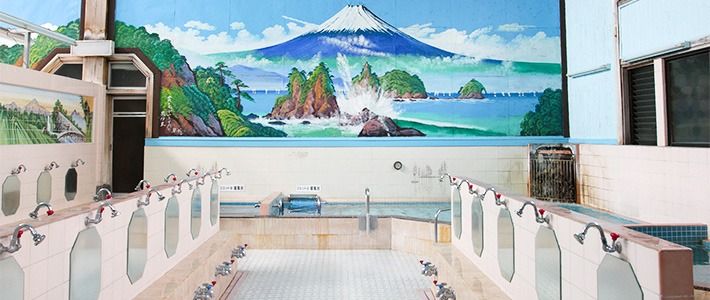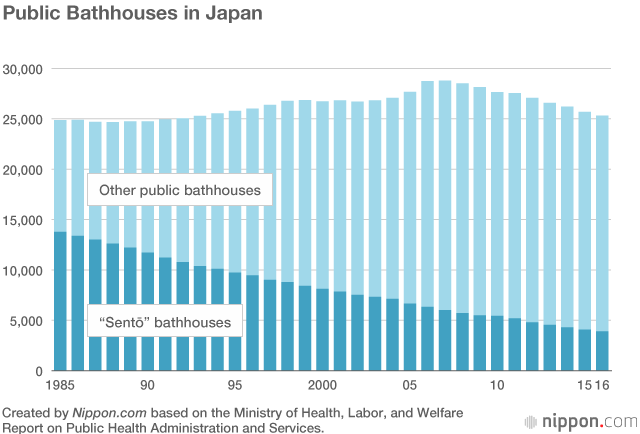
Traditional “Sentō” Bathhouses Giving Way to Large-Scale Leisure Facilities
Society- English
- 日本語
- 简体字
- 繁體字
- Français
- Español
- العربية
- Русский
“Sentō” public bathhouses have long been a popular gathering place for the bath-loving Japanese, but their numbers are dwindling. As of the end of March 2017, there were 3,900 public bathhouses throughout Japan, the first time the number has dipped below 4,000 since statistics began to be compiled. In 1963, only 59.1% of Japanese homes had their own bath, but in 2008, the percentage was 95.1%. By 2013, just about every household had its own bath and the government’s Statistics Bureau deleted the question on private bath availability on its Housing and Land Survey. For the purposes of hygiene and cleanliness, at least, it is no longer necessary to go out of the home to bathe.

Still, for most Japanese there is nothing like soaking in a large bath and communing with fellow bathers. The number of “other public bathhouses” has held steady at more than 20,000 since 2005. This category includes many leisure facilities, such as “super sentō” offering several kinds of baths—cascading hot waters, jet baths, mist saunas, and medicinal baths—and large-scale spas that can be enjoyed as an all-day excursion. Unlike the traditional “sentō,” whose fees are regulated by prefectural and municipal authorities, the large-scale leisure bath facilities are free to set their own prices and compete accordingly. Many include fun events and food and drink services to attract customers seeking the ultimate bath experience.
(Translated from Japanese. Banner photo © Pixta.)